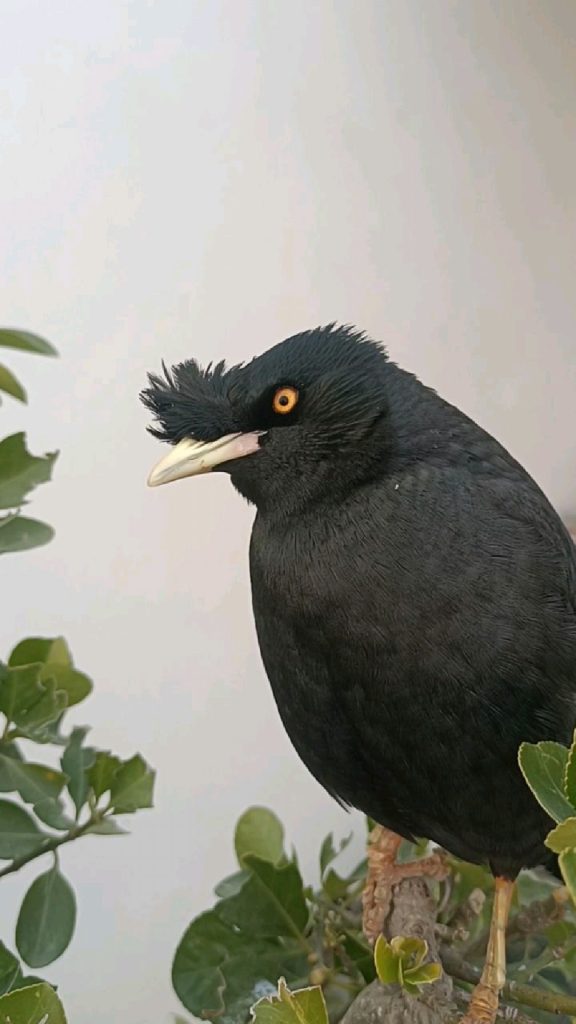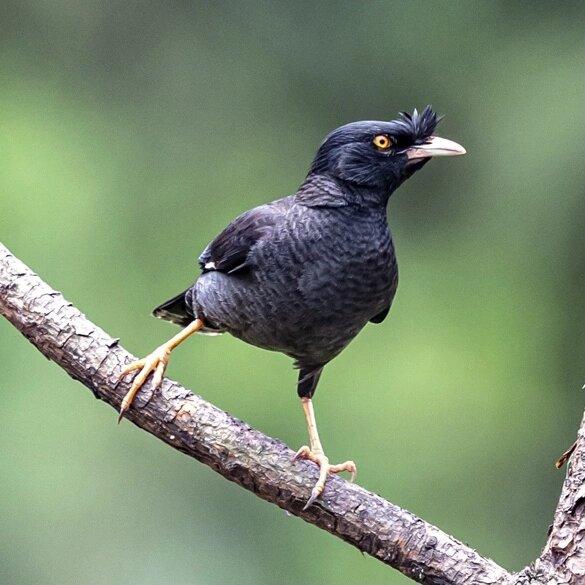Variety Overview
The myna bird, an ornamental species unique to China, has historically been favored by royalty and nobility as a pet. This bird frequently appears in various literary works and historical documents. Known for its completely black plumage and distinctive intelligence, the myna has become a popular choice among pet birds. According to the “Chinese Encyclopedia,” male mynas typically live between 8 and 10 years, while females can live from 10 to 12 years. Interestingly, wild mynas tend to have a lifespan that is 1 to 2 years shorter than their caged counterparts. Notably, there is historical evidence from the Tang Dynasty of a female myna living up to twenty-two years, showcasing remarkable longevity.
Latin Name: Acridotheres cristatellus
Also Known As: Qu Yu Le Ge, Ying Yu, Han Gao, Qu Yu, Jia Ling, Jia Ling, Feng Tou Ba Ge
Phylum: Chordata
Subphylum: Vertebrata
Class: Aves
Subclass: Neornithes
Order: Passeriformes
Suborder: Passeri (Songbirds)
Family: Sturnidae (Starlings)
Genus: Acridotheres
Species: Acridotheres cristatellus
Distribution Area: Southern Shaanxi to provinces south of the Yangtze River, including Taiwan and Hainan Province.
Design Characteristics
Mynas are predominantly black birds that may initially resemble crows but have distinct differences. A high-quality myna features a yellow beak and feet, white-tipped tail feathers, entirely white undertail coverts, and black plumage with a metallic sheen. They are known for their boldness and singing abilities. When standing, they puff out their chest and spread their wings proudly; they also tend to be relatively large in size. Notably, mynas are much smaller than various crow species (for instance, large-billed crows can reach up to 50 cm in length while mynas typically measure around 25 cm). Additionally, both their beaks and feet are bright yellow.
One distinctive feature at the junction between a myna’s beak and head is its prominent frontal feathers. Upon closer inspection of its head and neck plumage, you can observe a greenish metallic sheen interspersed within. The bases of both primary coverts and flight feathers are white, creating two noticeable white spots in the middle of each wing during flight. Viewed from below, these spots form an “eight” shape—hence the name Myna. This striking black-and-white contrast is a key characteristic for identifying these birds. Their tail feather tips are also white.
Juvenile mynas lack well-developed frontal feathers and have different body plumage colors compared to adults—often appearing slightly brownish or iron-gray in tone. During their early stages, young mynas have blue-gray or light green irises that gradually turn orange-yellow to orange-red by around 45 days old.

Living Habits
Mynah birds typically inhabit plains villages, farmlands, and forest edges. They enjoy gathering in flocks and can often be seen perched on water buffaloes’ backs or congregating in large trees or even on rooftops. At dusk, they create a stunning spectacle by flying en masse through the sky before settling down noisily for the night. Mynahs usually choose bamboo groves, large trees, or reed beds as their nighttime roosting spots where they often cohabit with other starling species.
Wild mynahs have a diverse diet. They follow farmers and plowing cattle to feed on earthworms, insects, and grubs unearthed by the plow. Additionally they peck at horseflies flies ticks on cattle backs hunt locusts beetles mole crickets other insects also consume various plant seeds weeds figs vegetable stems leaves.
Originally found mainly in southern China Indochina Peninsula typical Oriental realm species illegal bird trade has expanded their range rapidly now found Philippines Borneo northern China north Huai River becoming common residents.
Mynahs are relatively easy to keep as pets known for mimicking human speech sounds popular among bird enthusiasts elegant postures distinguishable calls males having beautiful high-pitched songs females low-pitched unpleasant ones.
When keeping mynahs home important respect natural habits sudden changes cause discomfort choose spacious cage bright bottom droppings tray due large size varied diet frequent defecation generally recommended raise individually avoid fights ensure healthy growth.
Mynahs prefer quiet environments especially during cold winters need proper warmth daily fresh air outings 1-1.5 hours morning enhance fitness health happiness.
